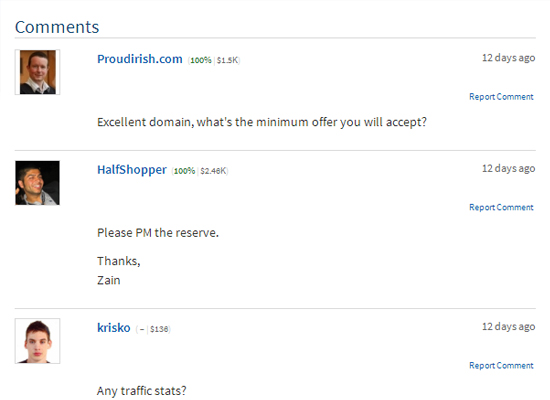Blogs have many purposes. They can be used to sell goods or services; be used as marketing material for an individual, company, product or idea; spread political or religious messages and ideals to the like-minded or potential converts; or any number of other things. Depending on the purpose, the message, the affiliation, the size and a number of other factors, blogs can sell for millions of dollars or much, much less. Luckily, there are a number of quantitative and qualitative factors that can garner an accurate valuation for a specific blog before it is taken to the market.
Quantitative Factors for Blog Valuation

How I Sold a Blog for $20,000 in 8 Months
Quantitative factors are those which deal with concrete quantities that can be given based on stable information. Typically these are statistics of one sort or another. When reflecting on quantitative factors in the valuation of a blog, we are looking at given statistics that do not need to be generated by qualitative factors subject to fluctuation or debate.
In terms of selling a blog, the most important quantity for a potential buyer is the income that the blog has generated. It is important to remember that by income we do not mean revenue but profit. Profit exists when revenue supersedes losses. An investor typically does not want to purchase a blog, business or any other commodity in the market if it has recurring losses. This makes a possible return-on-investment less likely.
If, however, the blog has been shown to produce profit, an investor will be more likely to consider purchasing it. To generate a blog’s value, a multiple is used in conjunction with the profit. A higher return on investment and a lower risk to the investor equals a higher multiple. Nonetheless, the average website worth multiple for content sites is 2.6, so a blog making $100,000 a year in profit will on average be sold for $260,000.
It has also been argued that using a multiple of 1.5 for blogs is useful. While this is much lower than the average cited above, it is generated for blogs specifically, whereas the other is generated for content sites generally, which can include a number of different online businesses in addition to blogs. In either case, it is useful to use both multiples in order to create a range for the value of the blog. Using the example of a blog generating $100,000 in profit and the use of both multiples, we arrive at a range of $150,000 to $260,000. This range is especially useful when qualitative factors, which can increase or decrease the value of the blog, are accounted for.
Qualitative Factors Included

Heavyweight Help: The Ultimate Guide to Selling Your Blog
Qualitative factors can add or decrease value the value of a blog. Determining what value is added or lessened, however, is difficult because there are no specific and concrete quantitative statistics being used. When selling to a private individual negotiations will likely determine whether the qualities of the business do in fact add value and how much.
The first qualitative factor to take into consideration is the possibility of growth, decline or maintained stability of profits in the future. If profits can be reasonably expected to increase, the value of the business increases as well. If, however, profits can be expected to decrease, the value of the blog will likely decrease and be on the lower end of the range calculated with the use of quantitative statistics illustrated above. If the profit margin is expected to remain stable with no reasonable expectation of growth or decline, then the quantitative valuation is likely sufficient at this point and no adjustments will be needed.
Another important quality to take into consideration is brand. If the blog has a brand that many are familiar with, the value of the blog is likely to increase. On the other hand, if the brand is relatively unknown, there is no reason to expect an increase in its value.
Conclusion
How to Sell Your Ecommerce Business for Maximum Value
Valuing a blog can be difficult, but if both quantitative and qualitative factors are taken into consideration, then a fair and equitable range can be determined. Of course, it is always important to remember that a blog or a website is worth is only worth what a buyer is willing to pay. Good negotiation skills coupled with the knowledge of what makes a blog valuable are thus useful tools that can help increase the final selling price of the blog.